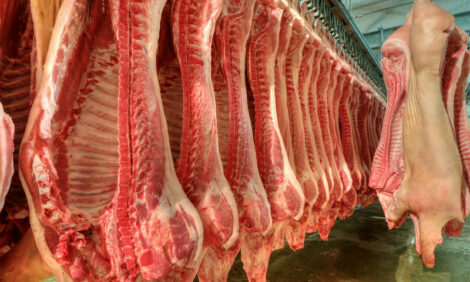



Market Preview: Big Guys Announce Sow Herd Cuts
US - Weekly US Market Preview provided by Steve R. Meyer, Ph.D., Paragon Economics, Inc.Tyson announced last week that it was reducing its breeding herd by 20,000 sows over the next 10 weeks. The reductions will come in Arkansas and Missouri and were attributed to weakness in the market for weaned pigs and feeder pigs. Tyson primarily sells pigs to feeders in the upper Midwest and then buys those pigs back for its slaughter operations.
This announcement comes on the heels of Smithfield’s June announcement that it intends to remove another 27,000 sows, mainly in the Texas Panhandle. Those sows were part of Premium Standard Farms, which Smithfield acquired in 2006. Few of those pigs were processed in Smithfield plants.
These actions give rise to the following questions: "Why do companies feel it’s necessary to make these announcements?" and, "Do they help or hinder an overall reduction in the sow herd?"
First, I understand that Tyson had no intention of making a big deal of its decision to reduce sow numbers. When word reached the market that the company was offering 2,000 sows per week for the next 10 weeks, however, the media was quick to ask Tyson officials to comment on the decision. This basically forced them to say something. But should that be an obligation?
In regard to Smithfield’s announcements, the company rightfully views itself as an industry leader. The 2008 announcement that it was reducing sow numbers by 100,000 head was a purposeful move to fulfill that role. They believed (and still believe) that the reduction is necessary for the industry. Their willingness to accept the mantle of "industry leader" is commendable but, in retrospect, the announcement may have had just the opposite effect of the intended results.
Knowing that Smithfield was making such a large reduction provided everyone else a perfect excuse to wait and see what happens. The wait-and-see attitude, though, is not the best template for results. Knowing that one producer was making such a substantial cut was a very big reason many chose to do nothing – at least for a while.
The "Let George do it" approach got some people past last summer’s $7/bu. corn and likely led some to think the worst was over, slowed the pace of sow herd reductions and prolonged the low-price period that remains with us today.
The recent announcements by Smithfield and Tyson, regardless of whether Tyson planned to do so or not, are probably more of the same. They provide an "out" for producers who want to stay in the business and will likely serve to prolong the reduction and the period of low prices.
Can these large companies make reductions without saying anything? Tyson apparently felt it must address the issue when challenged. Perhaps they fear being painted as "market manipulators" if they are not completely transparent. But, again, here is where transparency might not be a good thing. If everyone sees the need for a cutback and does not know that others are making cuts, it appears to me that they would be more likely to do what they think is needed for both themselves and the industry.
I’m not sure there is a right answer on this issue. But it deserves some thought.
Need 12 Per Cent Fewer Sows in US and Canada
Based on the March USDA survey and the April Statistics Canada survey, the US-Canadian sow herd contained 7.374 million animals. That is 4.9 per cent lower than the peak US-Canadian herd, which was in September-October 2007. The US had 5.991 million breeding animals on 1 March and Canada had 1.383 million on 1 April. See Figure 1.

I believe that output must get to 10 per cent below the peak numbers of Q4-2008 (35.7 mil. hd. slaughtered) and Q4-2008 (36.1 million head slaughtered). To achieve a 10 per cent reduction, the combined sow herd will probably have to be cut by 12 per cent to 6.8 million head. If Canadian and US producers both reduce by 12 per cent from the fall, 2007 peak, it will take the US herd to 5.463 million and the Canadian herd to 1.358 million head. Canada was already at 1.383 million as of 1 April.
It is very likely that Canadian producers will continue to reduce or liquidate. I have said for a long time that the Canadian herd was headed to about 1.2 million head and I still think it will get into the 1.2 to 1.3 million range. That would reduce the cutback needed in the US from 528,000 to roughly 400,000. It will take a while to accomplish that goal, but I think we must get started. Higher productivity and higher costs are not going away and prices must be forced higher if the industry is to once again prosper.










